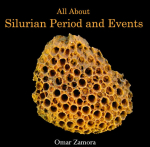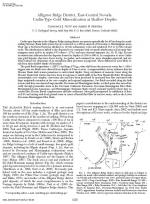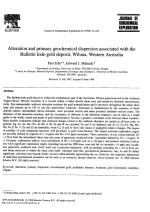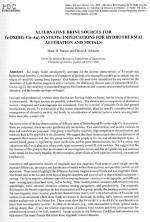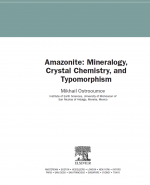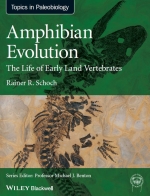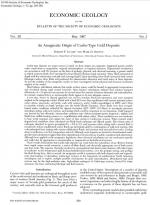No single model satisfactorily accounts for the diverse characteristic of Fe-oxide-rich hydrothennal systems. Consideration of a spectrum of geologically reasonable models gives insight into the origins of variability among these deposits. Key features that need to be rationalized by any model are the abundance of hydrothermal magnetite and/or hematite, the chemically distinct suite of elements (REE-Cu-Co-Au-Ag-U), the variability of associated magmas, the distributions and volumes of associated hydrothennal alteration, and the broader geologic setting(s).
Geologic and geochemical evidence show that the ore-fonning fluids are brines, but the source of the brines is controversial. Multiple sources are possible, indeed likely. The identity and consequences of alternative sources - magmatic and non-magmatic are considered: First, by a review of plausible fluids and general consequences, second, by examination of the system characteristics, third, by specific consideration of the consequences of alternative models, and fourth, by consideration of selected systems where non-magmatic brines must play a major role.
We review some of the key characteristics of different types of hydrothermal Fe-oxide-rich(-Cu-Au) systems. Some are economic; many are only geochemically anomalous. Two end-members and several variants on these end members are proposed. One group is typified by relatively high-temperature mineralization, and relatively high K/Na and Si/Fe in the alteration. We suggest that these features (and others) are distinctive of magmatic fluid sources and that this group overlaps with porphyry Cu-Au and related deposit types. A second, broad group is typified by more oxide-rich, sulfide-poor mineralization, low Si/Fe ratios, and voluminous alkali-rich alteration where sodic types commonly exceed K-rich varieties. We suggest that the key features of this group reflect involvement of non-magmatic brines and that ore grades are less common as the metals are less easily trapped. Hybrid examples, where fluids of both types are involved, are expected (and known).
Conceptual and quantitative models of magmatic and non-magmatic fluid sources yield insight into the expected differences, the source and distribution of metals within these systems, and possible controls on ore deposition. These models highlight the difference between magma-sourced fluids and non-magmatic fluids. The former tend to be focused at the tops of magma chambers and have a built-in depositional mechanism -cooling. The latter require a different type of focusing mechanism - structural or stratigraphic, and different traps - mixing, specialized host rocks, and/or boiling. These models predict consistent differences in mineral assemblages, metal contents, alteration volumes, zoning, paragenesis, and geochemistry. For magmatic fluid sources, the models reproduce the key characteristics of that group, notably the porphyry-related systems. For non-magmatic brine sources, predicted characteristics match well with observations of Fe-oxide-rich systems in environments where these fluids are known to dominate, including mafic igneous systems and modem analogs such as the Salton Sea. These cases show that Fe-oxide (-Cu-Au-REE-Co) enrichments can result from non-magmatic sources. In other environments (e.g., with intermediate to felsic igneous rocks; settings deeper than ~5 km) the relative importance of various fluid sources and their consequences for mineralization remain to be fully explored. Young systems in the American Cordillera and elsewhere can help unravel the many threads that relate these enigmatic mineral deposits.


